
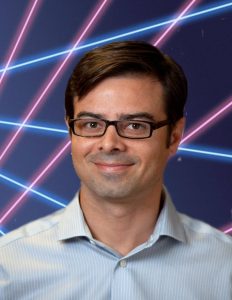 Sara: Copyright Chat is a podcast dedicated to discussing important copyright matters. Host Sara Benson, the copyright librarian from the University of Illinois, converses with experts from across the globe to engage the public with rights issues relevant their daily lives.
Sara: Copyright Chat is a podcast dedicated to discussing important copyright matters. Host Sara Benson, the copyright librarian from the University of Illinois, converses with experts from across the globe to engage the public with rights issues relevant their daily lives.
Sara: Welcome to a remotely recorded episode of Copyright Chat. Today I am speaking with Josh Bolick. Josh is the Scholarly Communications Librarian from the University Libraries at the University of Kansas. Welcome to the program Josh. Thanks a lot for being here! And today I wanted to focus on your article that has been getting quite a bit of buzz lately. I’ve heard it referred to as the “Bolick Method.” I think there are other ways that people are referring to it as well, but you’ve become quite famous in the open access movement for this article that you wrote and I wanted you to talk a little bit about it. Yeah, I’ll let you I’ll let you take it from there.
Josh: Yeah, thank you. Yeah, it’s remarkable to me that, there, I have a method. I think I’ve also seen “strategy” or “maneuver” is the other one—”The Bolick Maneuver.” So that’s really fun. It’s been really gratifying. We just, on Wednesday the 7th of August, we’re recording on the 9th of August, past a year since the date of publication, and the feedback has been really great, so basically the article is titled, “Leveraging Elsevier’s Creative Commons License Requirement to Undermine Embargoes” and it deals with a way of working within Elsevier’s author sharing policy that actually undermines the policy. So their sharing policy stipulates that authors of scholarly articles that are publishing in Elsevier journals are able to post the accepted manuscript. That’s a copy that includes all of the changes generally associated with peer review, and that the journal then transforms into the scholarly version of record—the final published version. But authors are able to post that version on their personal website or blog immediately on publication with a required or mandated Creative Commons license. It’s the Creative Commons Attribution Non-commercial No Derivatives license and simultaneously they impose embargoes on the author sharing via their institutional repository which is a primary tool that many authors use and many universities have for sharing their work so they impose embargoes on those versions of between 6 and 48 months. I think it’s something like 90 percent of them have 12 months or longer embargoes. But the thing is, is that, if the author goes to the trouble of posting their accepted manuscript on their personal website or blog with a Creative Commons Attribution Non-commercial No Derivatives license then as a repository administrator, I have all the permission that I need to post that same version in our institutional repository and ignore the embargo because then I’m not sharing conventionally under the Elsevier sharing policy, but under the permissions granted by the Creative Commons license instead.
Sara: Wow, so this is kind of a workaround that Elsevier unintentionally created when they enacted or implemented these strange policies.
Josh: Yeah, that’s my impression. You know, I mean we don’t have the benefit of having been involved in discussions about, like how the policy was set up, or like what the boardroom discussions might have been, so we can only speculate, but that I think that seems to be the case. I think it seems like they were either aware of it and hoping no one noticed or not aware of it until we started really talking about it.
Sara: So one of the things that I’ve seen as a result of your article—I saw that you kind of promoted it on the scholarly communications Listserv through ALA, and I noticed that Elsevier started kind of talking back to your discussion there. Can you talk a little bit about that? Like what—were you surprised by that, or?
Josh: Well, so, no, no. I wouldn’t say I was surprised. I mean, I addressed that a little bit in the article. So the article builds on a poster that I gave at the Kramer Copyright Conference in June 2017, and I posted, like I tweeted out the poster which is in my institutional repository, and blogged about it. And so it started circulating on social media and on the global open access list where Richard Pointer posted it. There was a separate discussion happening about Creative Commons licenses and he posted it there as being potentially of interest and in that round with the poster William Gun and Jim Hirsch both responded in different ways, and I blogged about those reactions and what I thought of them. And to be clear, I think it’s important that I’ve never wanted to critique people, or like attack, you know, the people but to contend with their ideas, and so I don’t view this, these interactions as personally antagonistic, but that… I mean I thought that the SCHOLCOMM list reaction/discussion to the article was fairly civil. I mean there, there were… there are other people that might disagree, and it’s been a long time since I looked at that, but in my own interactions, which are the only ones I can control, I was very careful to deal with ideas and not ad hominem attacks, but so I think I dealt with in the article, some of those reactions, and so then, it wasn’t surprising to me that there were reactions from Elsevier on the release of the article. And those, I mean, Elsevier’s main response has been, and shows up in a few different places, they provided it to a reporter for a research professional that did an article about it, basically saying that they require embargoes in order to, you know, sustain their business, and that they requested that their embargoes be respected. And that’s fine and good, like I think that’s a perfectly reasonable request, but as long as the policy is the way it’s currently constructed, my responsibility and those of my peers isn’t to Elsevier, but to my authors and to our community values of openness and in—and to that extent, I see it as my job to use all the tools available to me to achieve the fastest and broadest sharing, and so that’s why, you know like the loophole, as it is….Like we would never artificially extend an embargo, like if we could post a copy of an article in 12 months, we wouldn’t just for fun, extend the embargo to 24 months. And so, like authors wouldn’t stand for that, and like it wouldn’t make any sense when our job is to support sharing. And so, in my opinion, to ignore this opportunity to immediately share the institutional—via institutional repositories and to support authors in doing so would be like that—it’s adding an embargo where one is unnecessary. So I think Elsevier is well within its rights to request that embargoes be respected, but authors and repository folks are well within our rights to ignore that, because Creative Commons stipulates that no additional restrictions can be applied to a CC license, and so it sort of doesn’t matter what any other public statements are, because the CC license is on the accepted manuscripts and therefore can be leveraged.
Sara: So it’s been a while, as you mentioned, since your article was published, and Elsevier is well aware of the so-called Bolick Method that arises from their own policies. Is there any indication that they’re going to change those policies or… In response to that, or do you think that since it’s been so long they’re going to stay the way they are?
Josh: Yeah, I mean that’s another one that we aren’t privy to, you know to—their kind of “behind closed door” discussions. I mean in writing the article, it was not ever my goal to influence their policy. Like I—Elsevier is the subject of my article, but not the audience for my article, which is my peers. Who, who you know, support open access and institutional repositories at universities, though it also applies to subject repositories equally well. So, and given that, there was a lot of criticism when their—this version of the sharing policy was announced in spring 2015, from people who are a lot more powerful than me. Kevin Smith, who was then at Duke, but is now my dean at the University of Kansas that happened in 20… spring ‘16, I think. Kathleen Shearer of COAR and Heather Joseph of Sparc, you know, and lot, lots of, there was a lot of critique and Elsevier held their ground, and so I wouldn’t presume to have any influence over Elsevier’s, you know, shaping its policies. But, that came up in the discussions after the article was published, as sort of like, “Oh what would you have us do,” and based on statements they made, I think they would close the loophole if they were going to change it. They would close the loophole by getting rid of the Creative Commons license, but I think that would be a mistake, and I think that would sort of play into the critiques of the sharing policy in 2015. It would be a walk back from openness, and that’s, I would guess PR that they don’t really want to contend with. So my argument is that they should close the loophole by getting rid of embargoes altogether. There’s either zero or very little—like that, whatever evidence for the need, the necessity of embargoes is really weak, I think. There was an article in Times Higher Ed in late April where the executive publisher at SAGE, which is a, you know, another one of the Big Five commercial publishers says, quote: “There’s no evidence to say that zero embargo periods negatively affect subscriptions,” and he recognized that by removing them, they were being more friendly to authors and to sharing, and the same article mentions that Emerald scrapped embargoes in 2017 altogether, and that they view that as a great step in the company’s progression, and received a lot of positive feedback from authors. So we have players in, you know, big commercial publishing, who are doing away with embargoes altogether, and there’s so many other threats to scholarly publishing that like the haphazard availability of accepted manuscripts on the web, which remember like, in my method, it still requires action on the part of authors. Like this it’s nothing, nothing of this is automatic. And so it’s hard for me to believe that the availability of accepted manuscripts, rather than the versions of record, in a haphazard way, distributed across the Internet, are a threat to Elsevier’s viability when they have like 37 percent profit margins and are regularly absorbing other companies that, you know, are part of the sort of scholarly communication infrastructure. Like if the availability of these copies of papers, kind of around the web, is a threat to that, it’s a—you know, it’s a house of cards that is being assaulted from lots of other places, like the bigger threats are The University of California system walking away from their negotiations, or Sci-Hub, or the 40 percent of the content of ResearchGate being there in contradiction to the publication agreements. This isn’t the threat that—and I don’t think it’s a threat at all—and beyond that even if it were a threat, it’s not the one that they should be focused on.
Sara: I think that is very true. So this is a somewhat biased question, but you published an article in The Journal of Copyright in Education & Librarianship. I sit on the board of that journal, so I’m pretty proud of it. How important was it to you to publish that particular piece in an open access journal and why did you choose that particular journal.
Josh: Yeah well I mean. There’s—I wouldn’t publish anything in a non-open journal. Like my first choice would be always be to always publish in an open access journal. There are caveats to that, I mean there—in 20 I think ’16 I—with co-authors, published an article in The Journal of Wildlife Management which is I think a Wiley journal, but it’s a closed society journal, but we were responding to a critical, I think, deeply flawed, in my opinion, article about what was/how open access was like ruining science. And so I could see the way to like… We were engaging in a conversation that was happening within a context, and we made a copy of our article immediately available in our institutional repository on publication. And so, whenever I have a choice, like my hard preference is to publish in an open journal. There are, you know, circumstances under which I would consider not, but then it would be really important that I share a copy immediately in my repository. But I love the JCEL model, because, I mean the editorial board consists of people that I respect and admire and aspire to, have you know, the knowledge and experience of…there are no fees to authors, there are no fees to readers. You know, I think the last I heard, which is a couple months ago, my article had been accessed over 8000 times, and that’s, I mean you know, that’s pretty remarkable for a scholarly journal article. And so the openness, just the mere the ability to access it, via the Internet, you know everyone in the world with that access to the Internet has access to my article means that even, selfishly I have you know—if I’m thinking about my own career—I have the maximum potential for broad readership and impact, but it also means because of open licensing, JCEL publishes it with Creative Commons Attribution licenses, that as long as I’m given attribution, other parties can do whatever they want with the article. That’s why there was another podcast called Amicus Lectio where the podcaster just read my article and I’m thrilled with that, because that’s an accessibility sort of thing that someone who wants to listen to it rather than read it has a good clear audio transcript of a person reading it. I have heard that there’s a French translation in the works, but have it seen it yet. So, you know the fact that anyone can take this, and blog about it, translate it, modify it, implement it, adapt it, critique it, disagree with, it—you know, whatever, that’s the point to me of everything that we do, like I mean I don’t even get paid to write this article. Not directly, I mean. I have a salary and part of my job is research, but the point is engagement, and the more eyeballs that can access my paper to deal with it, the better that is for me, but also for the idea, and that I’m being inclusive there of critiques and challenges to it, like that is the whole goal of scholarship.
Sara: Right I mean that’s, I’m definitely on that soapbox of promoting open access, and the reusability of what is created by our scholarship. I had an article of mine recently translated into French, and I thought, “Wow that’s cool, people want to read this. That’s a good thing, I think.”
Josh: Absolutely.
Sara: So yeah, and I did, I went to that podcast, where someone was reading your article it’s really fascinating.
Josh: Yeah, it’s surreal to me to hear some point, and you know, read my article and sound smart doing it, like I did, you know, how listening to yourself, recordings of yourself is awkward, so like it didn’t have any of that awkwardness, like it was just this other person really articulately reading my article.
Sara: Yeah I mean you’re right I mean that’s, what OA opens us up to is a whole new world of— someone could create a video with your article. I’m not sure why, but they could.
Josh: Sure.
Sara: There are so many things that people can do, and Creative Commons licenses just allow us to open up that world. Well thank you so much for taking some time to talk to me about this and talk to the listeners, and I hope that more and more people will utilize the Bolick Method and hopefully we’ve kind of alerted more people to it. A lot of people already know, I mean that article definitely has been making the rounds even before it was finalized, like you said, through the poster and blog posts, and I know there’s been a lot of buzz about it, and I hope that this just further increases the noise around that article, and you know, I hope that other folks will engage and you know, let us know. You know, get in touch with Josh for using the Bolick Method. Let him know, because you know, that’s fun when you see real impact from your research, and I congratulate you on really being able to get something out there the making real impact so I really enjoyed reading your article myself, and I think it’s a great contribution to the field so. Thanks a lot, thank you for joining me today.
Josh: Thank you for having me like this.
Sara: I look forward to your next article. Let’s make some more waves.
Josh: Yeah, I hope so. This one might be hard to top.
Sara: Well I do know you have a book in the works so, you know, those are good too. You might take a little longer to produce though.
Josh: Yeah sometime next year should be, I think.
Sara: Oh wow well that’s pretty quick. So, so you want to put in a little plug for your book? What’s the title? Who’s the publisher?
Josh: Well ACRL is the publisher and we have a long fancy formal title, but basically the concept is an open textbook of scholarly communication librarianship, and it’s an introduction to the field, because we see this kind of work expanding so rapidly library schools haven’t necessarily incorporated it into their curriculum, and there’s lots of scholarship arguing that they should, and so the idea is to build on that scholarship and to provide from the community of practice the sort of theory practices, further suggested reading, ways to plug in to this work, and the idea is that this could serve as sort of the central vehicle for a “Topics in Scholarly Communication” course or be integrated throughout the curriculum based on where it intersects, which is everywhere I mean. We’re really motivated by the idea that almost everyone in an academic library is in some manner facilitating scholarly communication or engaging with intellectual property issues that are really central to scholarly communication, and so we would all benefit from, you know more basic knowledge of the concepts. I’m doing this with Will Cross at NC State and with Maria Bonn at Urbana-Champaign (University of Illinois at Urbana-Champaign), and we hope a really broad subset of our community, because we want it to be as inclusive and broad and representative as possible so that’s—that’s the pitch.
Sara: Oh I love it, and I feel the same way about copyright. It crosses over into every single field in the I-iSchool, and I often tell students, “Oh, what are you what field are you going into?” And they say, “Archives.” So there’s a lot of copyright there. And then school librarianship, and yup, you’re going to come across copyright, and so, yup, scholarly communication, same thing, right? It’s crossing over every single field so, and that’s going to be a really useful book. I look forward to reading it.
Josh: Me too.
Sara: Well thanks for joining me today, and hopefully our paths will cross again soon.
Josh: I’m sure.
If you are interested in reading the Article explaining this method, you can find it in the Journal of Copyright in Education and Librarianship (published August 7th, 2018): https://www.jcel-pub.org/jcel/article/view/54-74
For further reading, please follow these additional links, provided by Josh:
- The poster on which the article is based, presented June 2017 at the Kraemer Copyright Conference: http://hdl.handle.net/1808/24107
- Josh blogged about the poster and its reception, including Elsevier reactions here: https://oanarchy.wordpress.com/2017/06/22/of-elsevier-and-embargoes/
- 3 weeks after the article was published Josh wrote another blogpost, which builds on an interview he did with Research Professional (an EU research newsletter) and includes more Elsevier reactions: https://oanarchy.wordpress.com/2018/08/28/of-elsevier-and-embargoes-2-0/
- Since then, Josh was a guest on the podcast Ipse Dixit in May, 2019: https://shows.pippa.io/ipse-dixit/episodes/josh-bolick-on-one-weird-trick-you-can-use-to-avoid-publicat
- Josh’s article was read aloud on a new podcast Amicus Lectio: https://amicuslectio.podbean.com/e/leveraging-elsevier-s-creative-commons-license-requirement-to-undermine-embargo-by-josh-bolick-2018/
Music credit: http://www.bensound.com/royalty-free-music
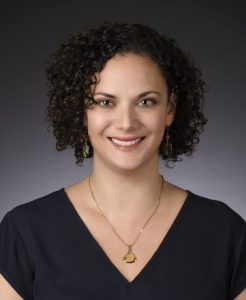 Sara: Welcome to an episode of copyright chat today we have a guest with us remotely—Kyra Folk-Farber. Kyra Folk-Farber is the head of the music library and chair of the library’s copyright advisory committee at the University of California Santa Barbara and she also serves as the chair of the Music Library Associations’ legislation committee. Welcome and thank you for joining us Kyra.
Sara: Welcome to an episode of copyright chat today we have a guest with us remotely—Kyra Folk-Farber. Kyra Folk-Farber is the head of the music library and chair of the library’s copyright advisory committee at the University of California Santa Barbara and she also serves as the chair of the Music Library Associations’ legislation committee. Welcome and thank you for joining us Kyra.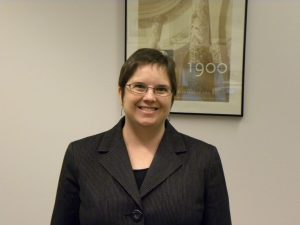 Benson: Copyright chat is a podcast dedicated to discussing important copyright matters. Host, Sara Benson, the copyright librarian from the University of Illinois, converses with experts from across the globe to engage the public with rights issues relevant their daily lives.
Benson: Copyright chat is a podcast dedicated to discussing important copyright matters. Host, Sara Benson, the copyright librarian from the University of Illinois, converses with experts from across the globe to engage the public with rights issues relevant their daily lives. Jonathan Band is an intellectual property law attorney for the Library Copyright Alliance. His website is www.policybandwidth.com.
Jonathan Band is an intellectual property law attorney for the Library Copyright Alliance. His website is www.policybandwidth.com.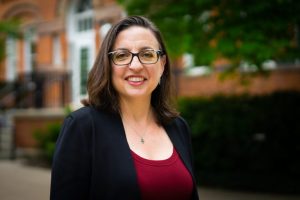 The open review of Planned Obsolescence:
The open review of Planned Obsolescence:  Copyright First Responders Website
Copyright First Responders Website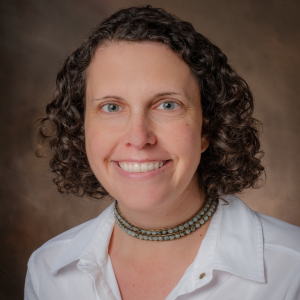 Referenced in this episode:
Referenced in this episode:
 Blog: http://blog.ninapaley.com
Blog: http://blog.ninapaley.com